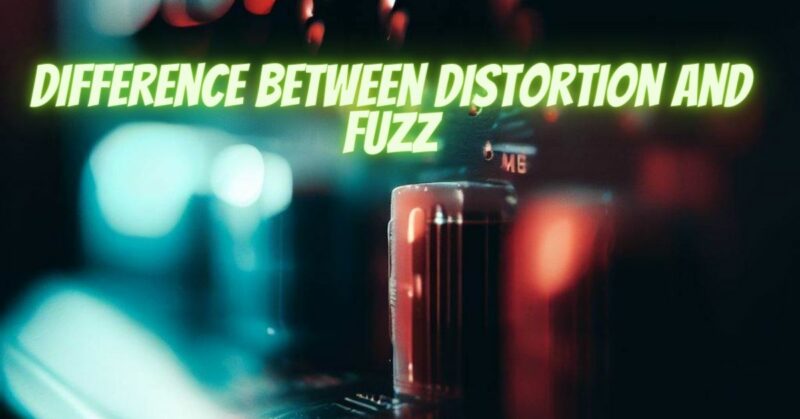Distortion and fuzz are both popular guitar effects that produce saturated and distorted tones, but they have distinct characteristics and sonic qualities. Here are the main differences between distortion and fuzz:
- Clipping Method: Distortion pedals typically use diode clipping to shape and limit the waveform, resulting in a more controlled and compressed distortion sound. Fuzz pedals, on the other hand, often utilize transistor-based or germanium diode clipping, which produces a more extreme and uncontrolled clipping effect, resulting in a fuzzy and buzzy tone.
- Gain and Sustain: Distortion pedals offer a wide range of gain levels, from mild to high, allowing for varying degrees of saturation and sustain. They provide more note clarity and definition even at higher gain settings. Fuzz pedals, on the other hand, tend to produce extremely high levels of gain and sustain, often compressing the guitar signal and creating a thicker, fuzzier texture with reduced note articulation.
- Tone and Character: Distortion pedals offer a more focused and articulate tone, allowing the natural characteristics of your guitar and playing style to come through. They provide a tighter low-end response and can be dialed in for a specific EQ contour, allowing more control over shaping the tone. Fuzz pedals have a more distinct and unique character, characterized by a wooly, saturated, and vintage-inspired tone. Fuzz tends to add more harmonics and a pronounced mid-range emphasis, contributing to a thick and textured sound.
- Genre and Musical Applications: Distortion pedals are widely used in various genres, including rock, hard rock, and metal, where a heavier and more aggressive tone is desired. They are versatile and can cover a broad range of musical styles. Fuzz pedals are often associated with genres like psychedelic rock, stoner rock, and garage rock, where a thick, saturated, and vintage-inspired tone is favored. Fuzz pedals can add a unique texture and character to your playing, especially for solos or sections that require a more experimental or retro sound.
- Dynamics and Response: Distortion pedals generally provide a more responsive and dynamic playing experience, allowing for nuances in picking and playing technique to come through. Fuzz pedals, due to their higher levels of compression, may reduce the dynamics and responsiveness, resulting in a more consistent and sustained tone.
It’s important to note that these distinctions are generalizations, and there can be overlap between distortion and fuzz pedals, with some pedals offering a blend of both characteristics. Ultimately, the choice between distortion and fuzz depends on your personal preferences, playing style, and the specific tone you’re looking to achieve. Experimentation and exploring different pedals will help you find the one that best suits your musical needs and artistic expression.


